T. Rowe Price Group (NASDAQ:TROW) is one of the largest asset managers in the world, with about $1.5 trillion in assets under management. The asset management business is booming, especially as the economy has rebounded from COVID-19 and equity markets rally.
Government intervention has played no small part in keeping markets buoyant, as low interest rates encourage investors to invest in riskier assets such as equities. T. Rowe faces challenges from the massive low-cost asset managers, notably BlackRock (NYSE:BLK) and Vanguard, but the firm has delivered robust and consistent growth for many years.
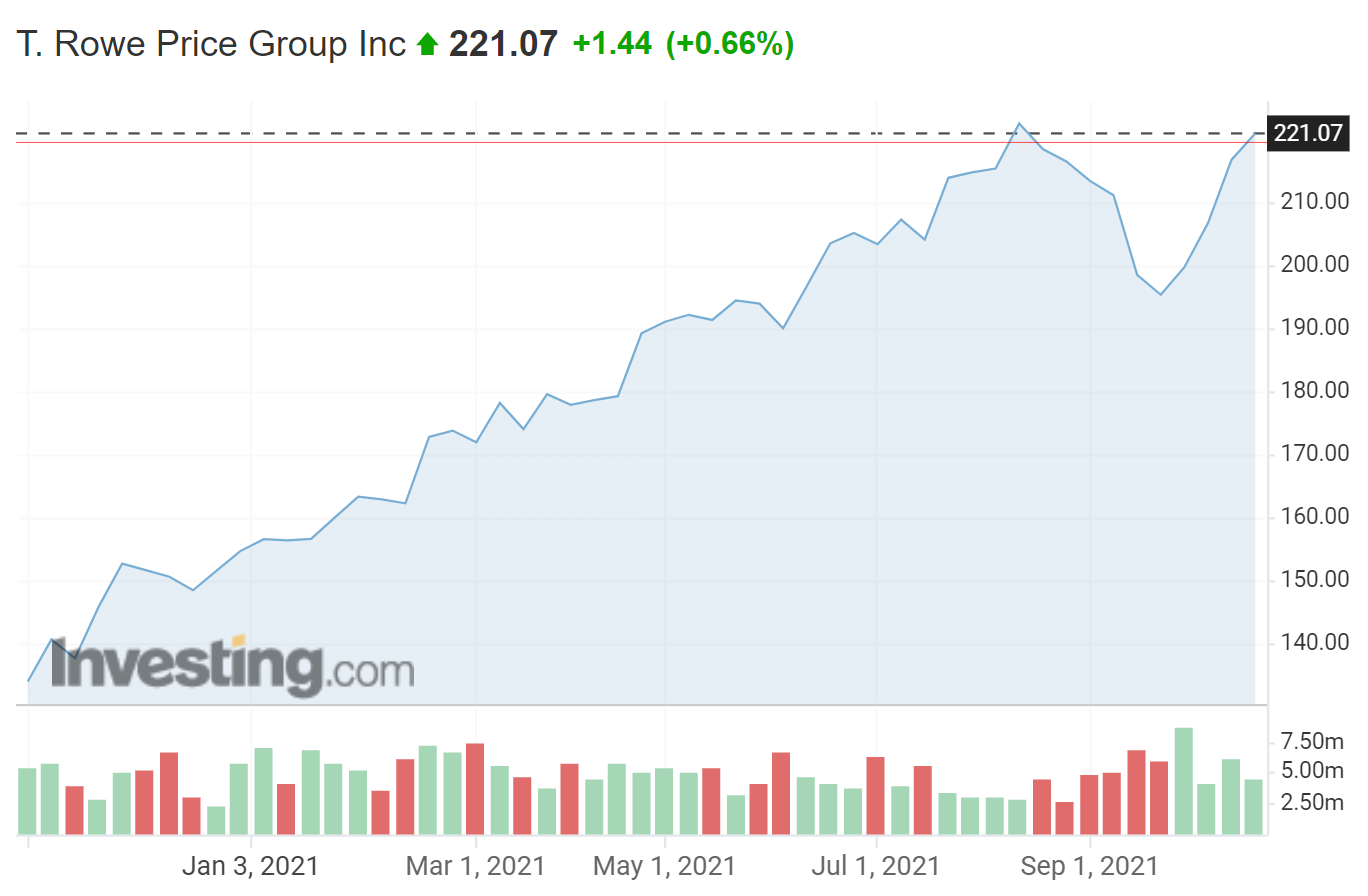
Source: Investing.com
TROW has returned a total of 50.15% for the YTD, although the shares are slightly below their YTD high close of $223.87 on Aug. 31. TROW has substantially outperformed the Asset Management industry for the past 1-, 3-, 5-, 10-, and 15-year periods.

Source: Morningstar
The current dividend yield for TROW is 1.97%, with 3-, 5-, and 10-year annualized dividend growth rates of 15.7%, 14.1%, and 13.2%, respectively. The company has 35 consecutive years of dividend growth and the current payout ratio is a low 33.9%. On the basis of the Gordon Growth Model, it would not be unreasonable to expect future annualized returns of 15%. The consensus expected EPS growth for the next 3-5 years is 13.9% per year, which would support dividend growth rates in line with the past decade.
I last wrote about TROW on Mar. 27, 2021, a little over 7 months ago. The article was titled T. Rowe Price Delivers Impressively Consistent Growth. At that time, the shares were above the Wall Street consensus 12-month price target. The consensus rating from the Wall Street analysts was either bullish or neutral, depending on the source.
Given TROW’s strong fundamentals and record as a reliable dividend growth stock, the consensus expectation for negative price returns for the next 12 months was somewhat surprising. I assigned TROW a bullish rating on the basis of the fundamentals and because the market-implied outlook (derived from options prices as explained in the next section) was modestly bullish. Since my article, TROW has substantially outperformed the S&P 500.
The price of an option on a stock represents the market’s consensus estimate of the probability that the stock price will rise above (call option) or fall below (put option) a specific level between now and when the option expires. By analyzing the prices of put and call options at a range of strike prices and the same expiration date, it is possible to calculate a probabilistic price return forecast for the stock that reconciles the options prices. This is referred to as the market-implied outlook. In late March, the market-implied outlook for TROW to the end of 2021 was slightly bullish.
With more than 7 months, and three quarterly earnings reports, since my last analysis, I have updated the market-implied outlook for TROW and discuss this in the context of the Wall Street consensus outlook and the fundamentals.
Wall Street Consensus Outlook for TROW
E-Trade calculates the Wall Street consensus outlook for TROW by combining the views of 8 ranked analysts who have published ratings and price targets within the past 90 days. The consensus rating is neutral and the consensus 12-month price target is 2.86% below the current price. Back in late March, E-Trade’s consensus rating was bullish and the consensus 12-month price target was $170.43, 2.33% below the share price at that time.
The Wall Street consensus outlook is that all of the next year’s expected growth is already reflected in the stock price—but that was also the case in late March.
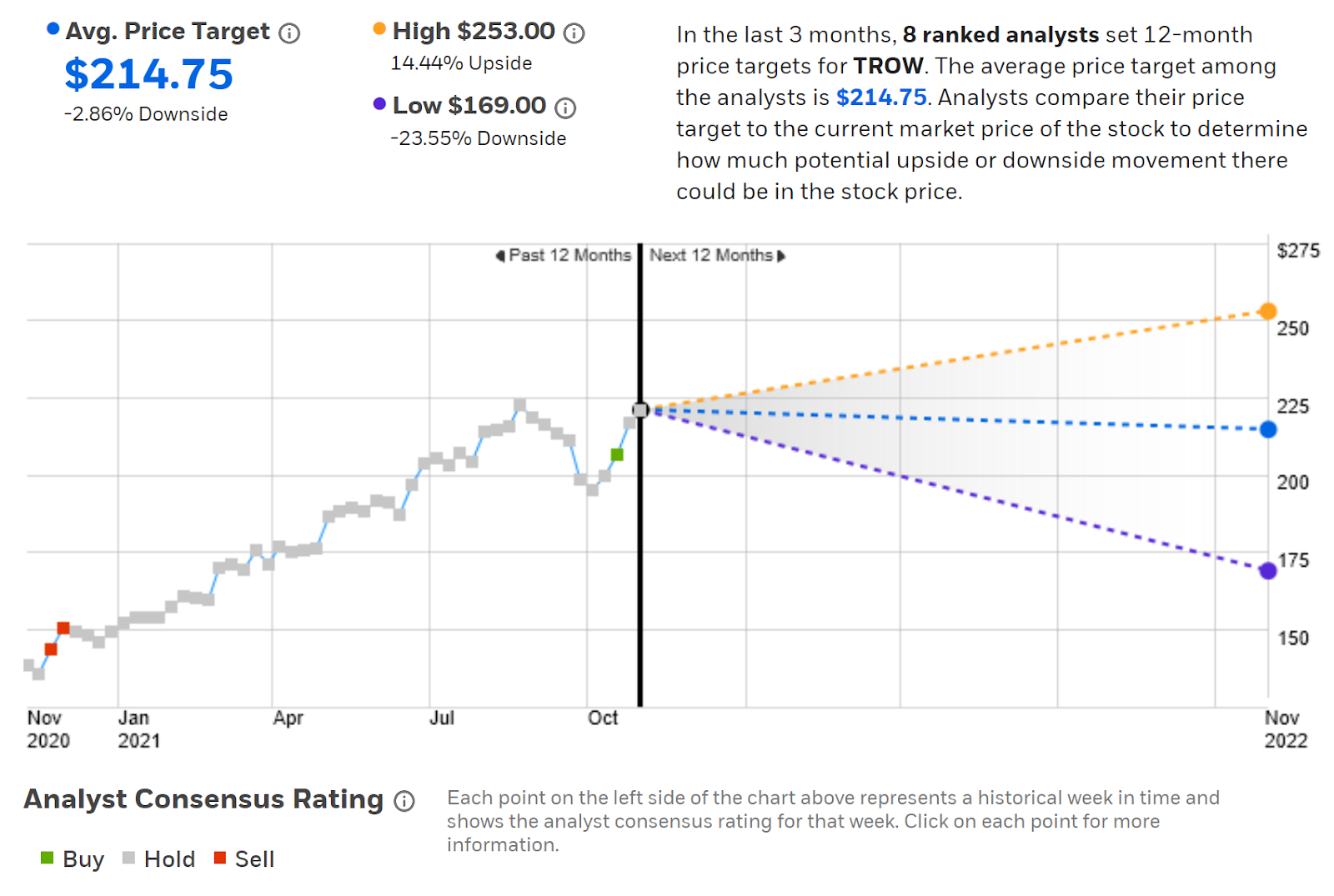
Source: E-Trade
Investing.com calculates the Wall Street consensus from a cohort of 11 analysts. The consensus rating is neutral and the consensus 12-month price target is 3.97% below the current share price.
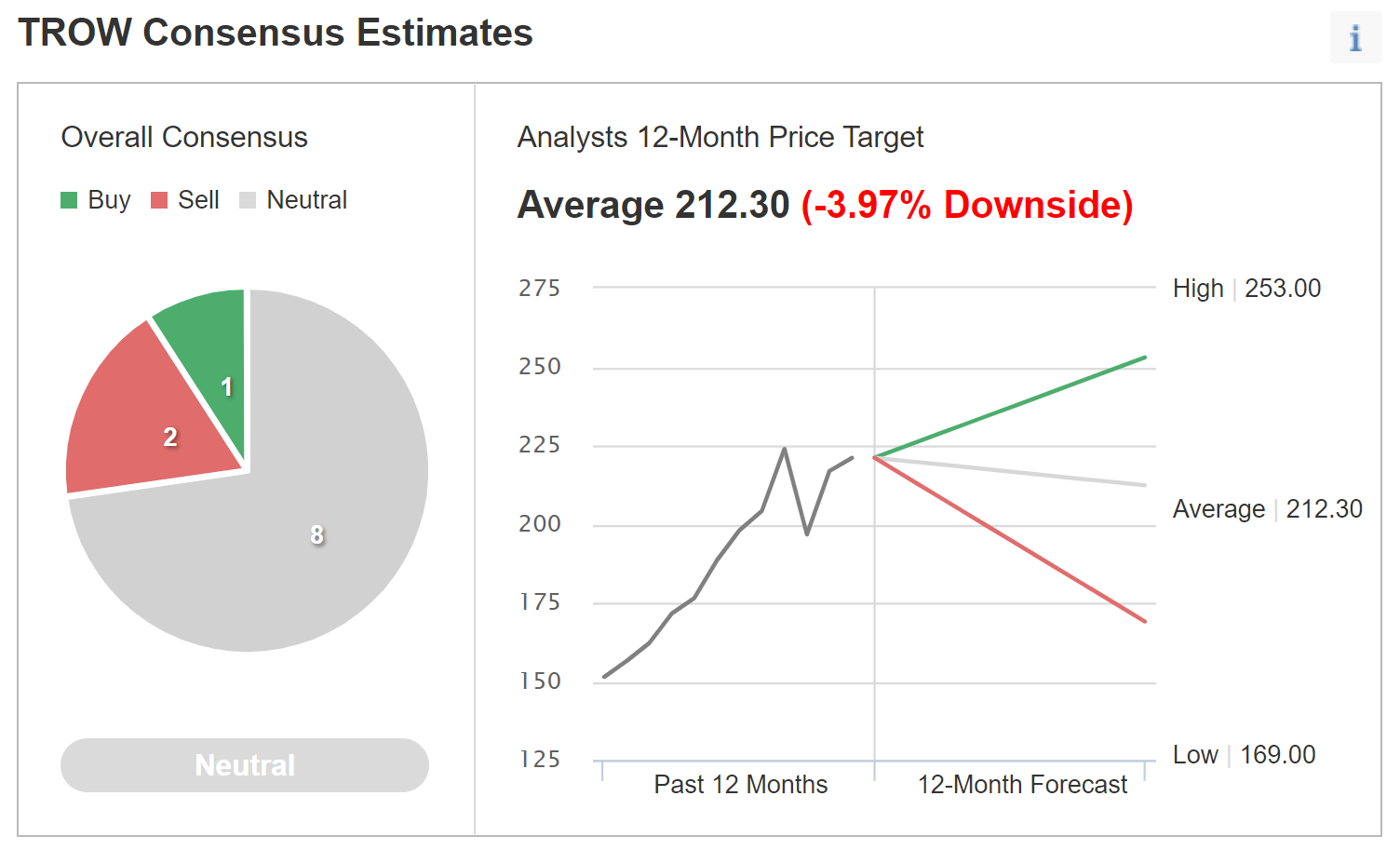
Source: Investing.com
The consensus outlook from the Wall Street analysts is neutral, with price targets that imply that the next year’s growth is already priced into the shares. Back in late March, the 12-month price targets suggested that the shares had no upside, as well, but the shares have rallied since then. The market, in other words, appears to be viewing TROW in a more optimistic light than the analysts.
Market-Implied Outlook for TROW
Even though TROW has a market cap of almost $50 billion, the options trading on the shares is fairly thin. This means that the market-implied outlook may be less reflective of actual market sentiment. I have analyzed options on TROW that expire on Jan. 21, 2022 to generate the market-implied outlook for the next 2.45 months (from now until that expiration date). I have also calculated the market-implied outlook for the next 5.2 months from the prices of options that expire on Apr. 14, 2022. The trading in options for this later expiration date is especially light, so I give little weight to this longer outlook.
The standard presentation of the market-implied outlook is in the form of a probability distribution of price returns, with probability on the vertical axis and return on the horizontal.
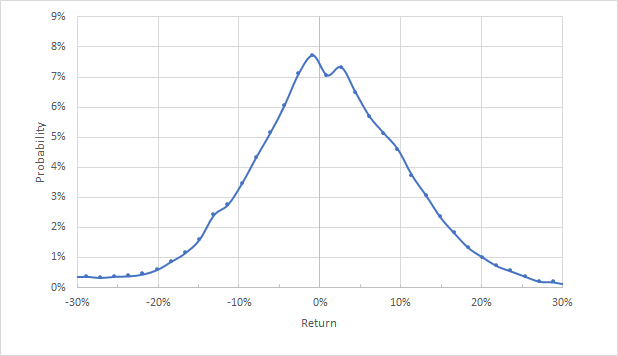
Source: Author’s calculations using options quotes from E-Trade
The market-implied outlook for TROW to mid January of 2022 is generally symmetric, with comparable probabilities of positive and negative returns of the same magnitude, although the maximum probability outcomes are slightly tilted towards negative returns. The peak probability corresponds to a price return of -0.9%. The annualized volatility derived from this distribution is 26.8%.
To make it easier to directly compare the probabilities of positive and negative returns, I rotate the negative return side of the distribution about the vertical axis (see chart below).
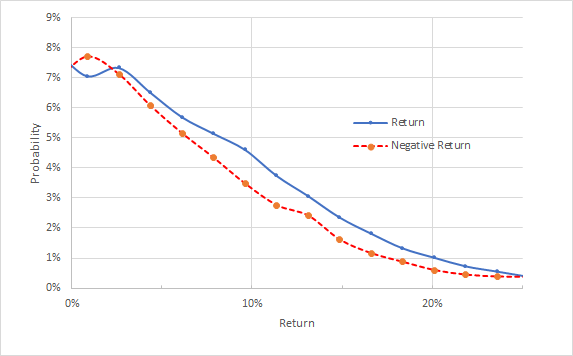
Source: Author’s calculations using options quotes from E-Trade. The negative return side of the distribution has been rotated about the vertical axis.
This view of the market-implied outlook shows that the probabilities of positive returns are consistently higher than for negative returns across a wide range of the most-probable outcomes (the solid blue line is above the dashed red line for almost all of the possible returns on the chart). This is a bullish indication for TROW.
Theory suggests that the market-implied outlook is expected to have a negative bias because investors, in aggregate, are risk averse and tend to over-pay for put options. Considering the potential for this bias reinforces the bullish interpretation of the market-implied outlook for TROW.
The market-implied outlook for the next 5.2 months, from now until Apr. 14, 2022, is generally consistent with the shorter-term outlook although the peak in probability at a small negative return is more pronounced (return of -3.5%) and the tilt towards positive returns for the range of other outcomes is less pronounced. As noted previously, I have little confidence in this outlook due to the lack of active trading in options with this expiration. I interpret this outlook as neutral.

Source: Author’s calculations using options quotes from E-Trade. The negative return side of the distribution has been rotated about the vertical axis.
Summary
TROW has delivered impressive returns so far this year, and since my last analysis in March. The asset management business thrives when markets rally, of course (and vice versa). The Wall Street consensus back in March was that the shares were fully priced and the same is true today. The fundamentals are attractive and there is no obvious impediment to the company maintaining its long-term dividend growth trajectory.
While the Wall Street consensus price target for the next year is below the current price, the dividend yield and expected (continued) dividend growth rate can reasonably support a 15% total annualized return. The market-implied outlook to early 2022 continues to be slightly bullish, albeit less bullish than the market-implied outlook for the balance of 2021 that I calculated in late March. I am maintaining my bullish overall rating for TROW.
